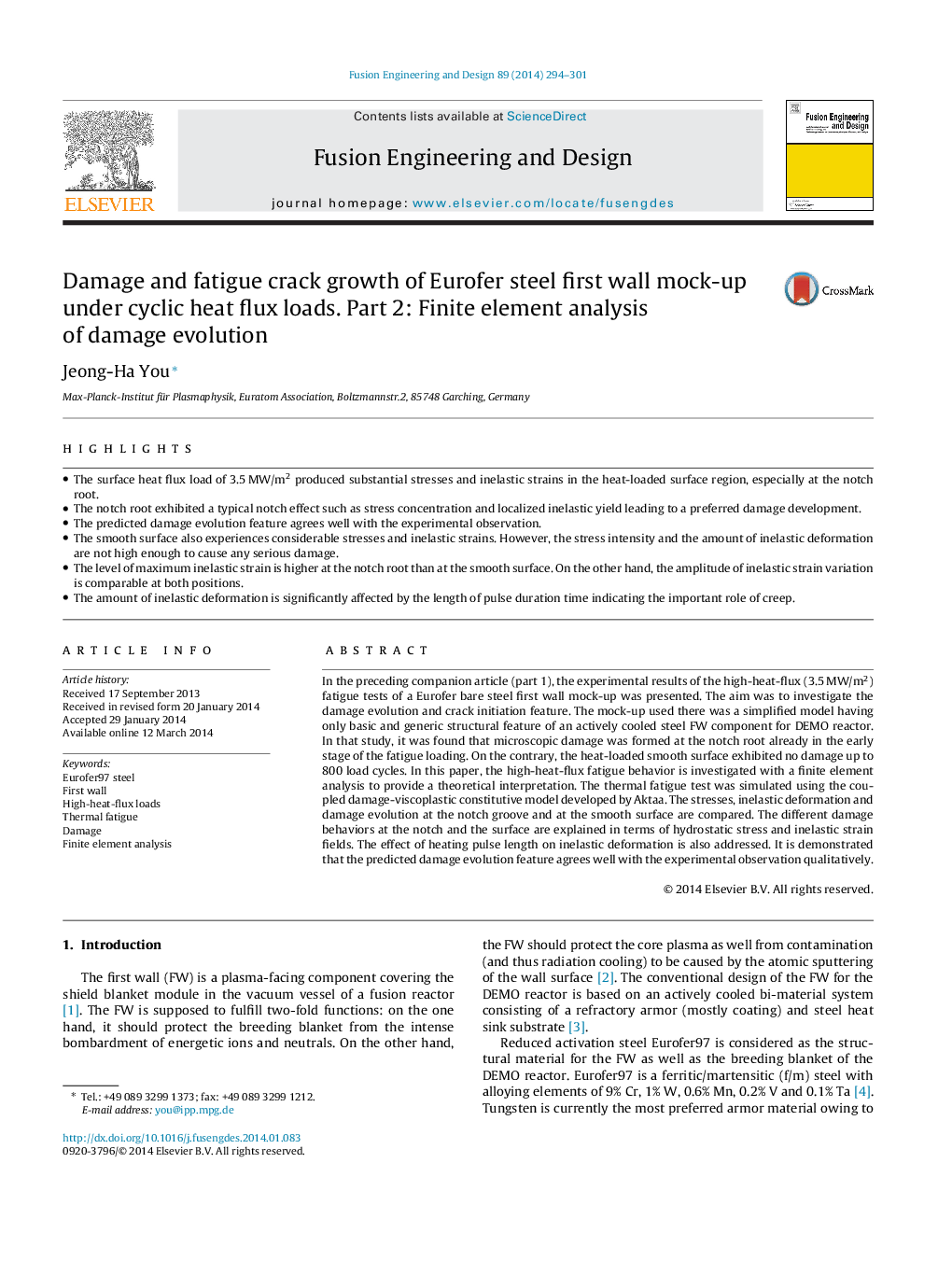| کد مقاله | کد نشریه | سال انتشار | مقاله انگلیسی | نسخه تمام متن |
|---|---|---|---|---|
| 271043 | 504987 | 2014 | 8 صفحه PDF | دانلود رایگان |
• The surface heat flux load of 3.5 MW/m2 produced substantial stresses and inelastic strains in the heat-loaded surface region, especially at the notch root.
• The notch root exhibited a typical notch effect such as stress concentration and localized inelastic yield leading to a preferred damage development.
• The predicted damage evolution feature agrees well with the experimental observation.
• The smooth surface also experiences considerable stresses and inelastic strains. However, the stress intensity and the amount of inelastic deformation are not high enough to cause any serious damage.
• The level of maximum inelastic strain is higher at the notch root than at the smooth surface. On the other hand, the amplitude of inelastic strain variation is comparable at both positions.
• The amount of inelastic deformation is significantly affected by the length of pulse duration time indicating the important role of creep.
In the preceding companion article (part 1), the experimental results of the high-heat-flux (3.5 MW/m2) fatigue tests of a Eurofer bare steel first wall mock-up was presented. The aim was to investigate the damage evolution and crack initiation feature. The mock-up used there was a simplified model having only basic and generic structural feature of an actively cooled steel FW component for DEMO reactor. In that study, it was found that microscopic damage was formed at the notch root already in the early stage of the fatigue loading. On the contrary, the heat-loaded smooth surface exhibited no damage up to 800 load cycles. In this paper, the high-heat-flux fatigue behavior is investigated with a finite element analysis to provide a theoretical interpretation. The thermal fatigue test was simulated using the coupled damage-viscoplastic constitutive model developed by Aktaa. The stresses, inelastic deformation and damage evolution at the notch groove and at the smooth surface are compared. The different damage behaviors at the notch and the surface are explained in terms of hydrostatic stress and inelastic strain fields. The effect of heating pulse length on inelastic deformation is also addressed. It is demonstrated that the predicted damage evolution feature agrees well with the experimental observation qualitatively.
Journal: Fusion Engineering and Design - Volume 89, Issue 4, April 2014, Pages 294–301
